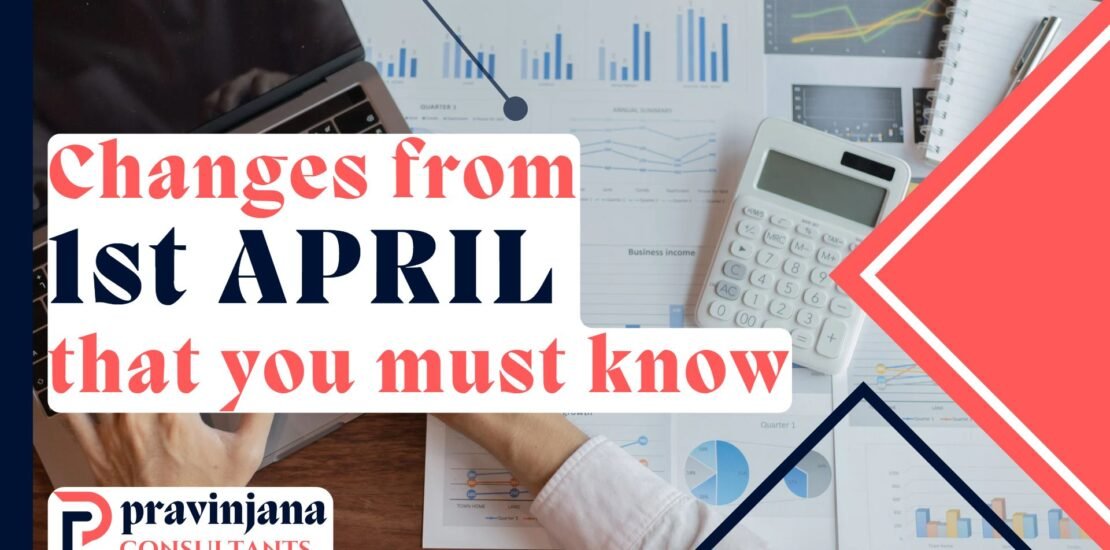- April 1, 2023
- Posted by: Pravinjana Consultants
- Category: What's New

1. Proceeds from ULIP & LIC
Proceeds from 𝘜𝘓𝘐𝘗 for annual premium above Rs. 2.50 lakh and 𝘭𝘪𝘧𝘦 𝘪𝘯𝘴𝘶𝘳𝘢𝘯𝘤𝘦 𝘱𝘰𝘭𝘪𝘤𝘺 for annual premium above Rs. 5 lakh will be taxable in FY24.
Where aggregate of premium for life insurance policies (other than ULIP) issued on or after 1st April, 2023 is above Rs. 5 lakh, income from only those policies with aggregate premium up to Rs. 5 lakh shall be exempt. This will not affect the tax exemption provided to the amount received on the death of person insured. It will also not affect insurance policies issued till 31st March, 2023.
2.New Tax Slab
New income tax slab will become by-default tax regime for earning individuals. Now, if an earning individual wish to go with the old tax regime, needs to opt for the old tax regime.
3.Standard Deduction
Standard deduction of Rs. 50,000 has been passed on to both old and new income tax regime
4. No LTCG tax benefit for debt mutual funds
From April 1, capital gains made on debt mutual funds — schemes that invest less than 35 percent in Indian equities — will be added to your income and taxed at the slab rate applicable to you.
At present – that is, up to March 31 – capital gains made on debt funds are considered long-term if units are held for more than three years. Such long-term capital gains (LTCG) attract a tax of 20 percent after indexation, which brings down the tax payable. This benefit will no longer be available from April 1.
5. New NPS rules for withdrawal
The pension regulator, Pension Fund Regulatory and Development Authority (PFRDA), has made the uploading of certain documents mandatory, effective from April 1, 2023, to make annuity payments faster and simpler for subscribers.
The documents that needed to be uploaded on the CRA (Central Record-keeping Agency) system are NPS exit/withdrawal forms, proof of identity and address as specified in the withdrawal form, bank account proof and copy of PRAN (Permanent Retirement Account Number) card.
The CRA system is a web-based application for carrying out NPS-related activities.
You can withdraw 25 percent of your contributions from the account after completing five years in the Tier I account of NPS. You can withdraw for specific reasons – treatment of illness, disability, to fund higher education or marriage of children and for property purchase. The regulator restricts you to withdraw a maximum of three times during the entire period of investment.
6. Purchase gold jewellery and gold artefacts with HUID number
From April 1, only hallmarked gold jewellery with a Hallmark Unique Identification (HUID) number shall be permitted to be sold at all jewellery stores in India. HUID number is a six-digit alphanumeric code. It will be given to every piece of jewellery at the time of hallmarking and will be unique for every piece of jewellery. It offers transparency and the buyer can get a true valuation of the gold purchased.
